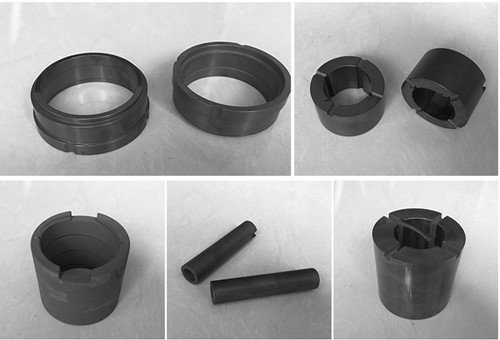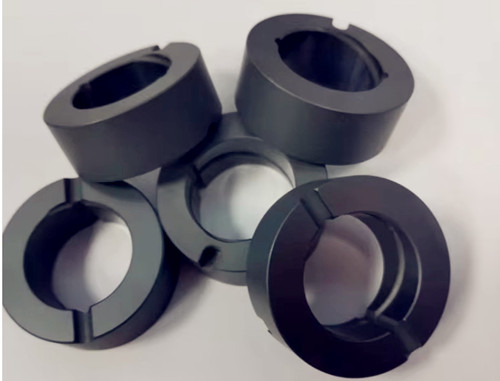Silicon carbide vs tungsten carbide
How to better understand silicon carbide vs tungsten carbide. This article provides a comparative analysis of silicon carbide (SiC) vs tungsten carbide (WC), focusing on their properties and industrial applications.
1. Silicon Carbide (SiC)
Density: 3.2 g/cm³.
Primary Variants:
Black SiC (α-SiC, 98.5% purity): Exhibits higher toughness than green SiC, primarily used for machining low-tensile materials (glass, ceramics, cast iron).
Green SiC (α-SiC, >99% purity): Superior self-sharpening properties, ideal for cemented carbides, titanium alloys, and precision grinding of high-speed steel tools.
Cubic SiC: A yellow-green crystal synthesized via specialized methods, used for ultra-precision bearing machining, reducing surface roughness from Ra 32–0.16 μm to Ra 0.04–0.02 μm.

Key Properties:
High thermal conductivity (120–490 W/m·K)
Semiconductor behavior with oxidation resistance up to 1600°C
Chemically inert in acidic/alkaline environments (pH 3–11)
Applications:
Turbine blade coatings (extends service life by 100–200%)
Energy-efficient refractories (low thermal expansion, high thermal shock resistance)
Deoxidizers in steelmaking (85% purity grade)
Heating elements (e.g., silicon carbide rods)
2. Silicon Nitride (Si₃N₄)
Structure: Diamond-like 3D lattice.
Properties:
Melting point: 1900°C
Density: 3.2–3.4 g/cm³ | Hardness: 1500–1900 HV
Flexural strength: 600–1000 MPa | Elastic modulus: 310 GPa
Stable in air up to 1450–1550°C
Soluble in HF; inert to water and dilute acids
3. Tungsten Carbide (WC)
Structure: Hexagonal crystal (metallic luster).
Properties:
Density: 15.63 g/cm³ (18°C) | Melting point: 2870°C
Insoluble in H₂O, HCl, H₂SO₄; soluble in HNO₃-HF mixtures
Brittleness reduced by adding Ti/Co (1–5 wt%)
Synthesis:
Produced via carburization of tungsten powder at 1400–1600°C.
Oxide-derived WC requires vacuum treatment at 1500°C.
Applications:
Cutting tools (with TiC/TaC additives for impact resistance)
High-temperature components (carbide nozzles, jet engines, carbide seals)
Structural Insight:
Carbon atoms occupy interstitial sites in the tungsten lattice, forming an interstitial solid solution.

4. Mechanical Seal Lifespan in Sewage Pumps
[Q]: How long do sewage pump mechanical seals last?
[A]: Depends on material and operating conditions:
Tungsten carbide: 1–2 years
Silicon carbide: ~1 year
Ceramic: <6 months
